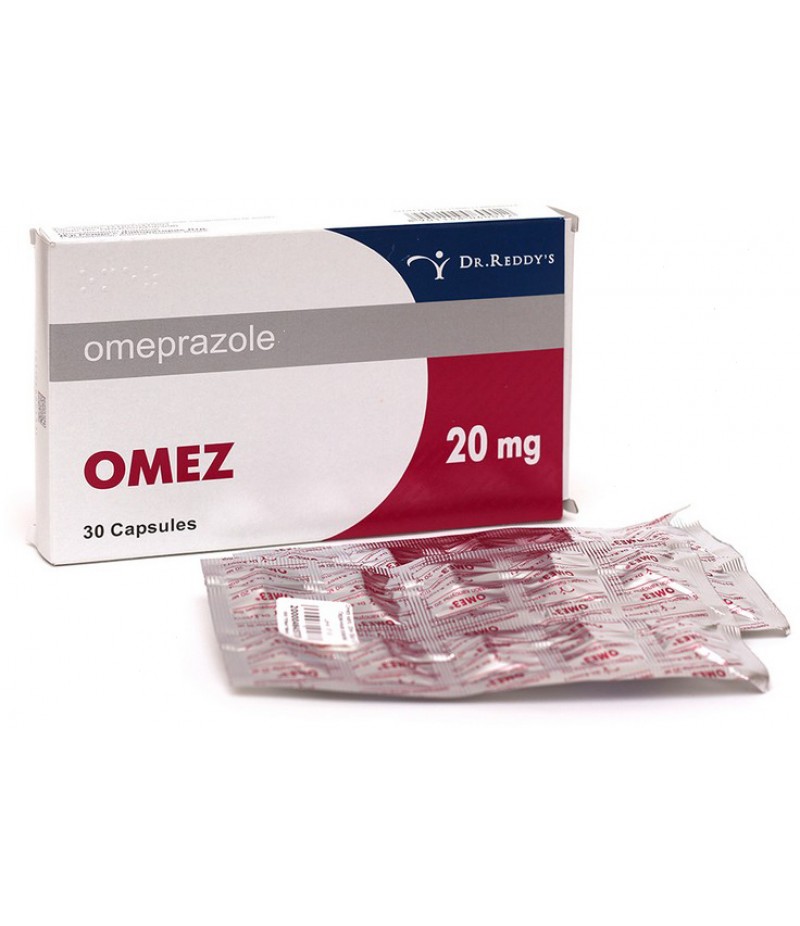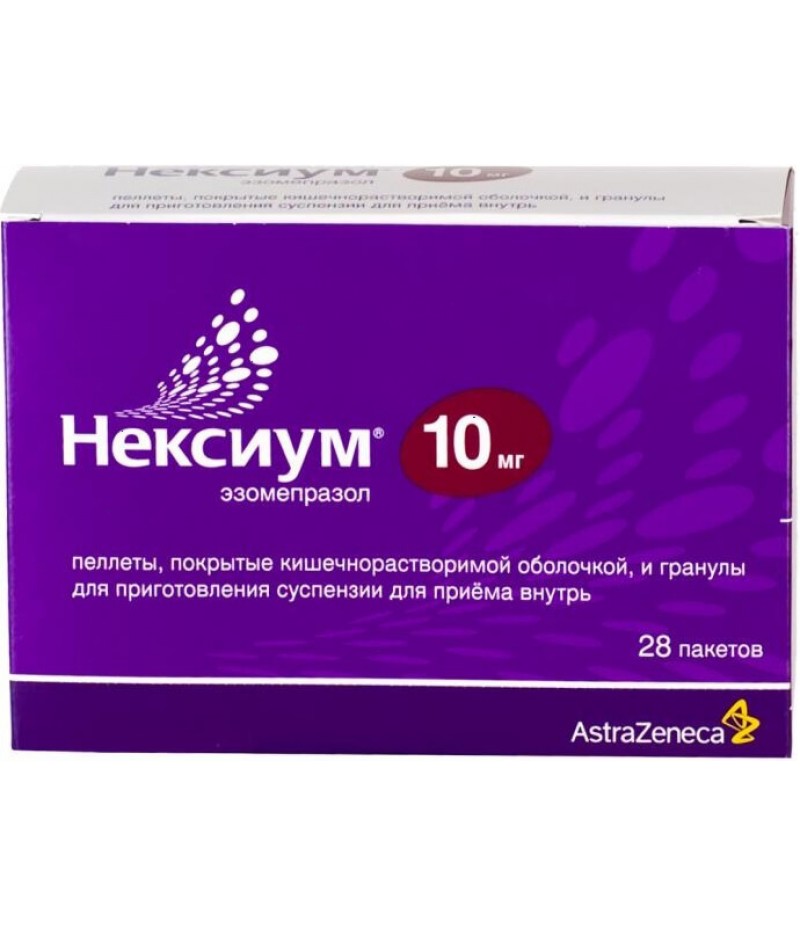Emanera caps 40mg #28
- $38.81
- 3 or more $37.99
- Availability:In Stock
User manual for EmaneraReed more and buy Emanera on this pageCompositionThe drug is released in two dosages: with 20.645 mg of esomeprazole magnesium or 41.29 mg of esomeprazole magnesium (which is equivalent to the content of eso..
Tags: caps
User manual for Emanera
Reed more and buy Emanera on this page
Composition
The drug is released in two dosages: with 20.645 mg of esomeprazole magnesium or 41.29 mg of esomeprazole magnesium (which is equivalent to the content of esomeprazole 20 or 40 mg).
Also, the agent contains auxiliary elements: starch syrup, sucrose, povidone, sodium lauryl sulfate, polysorbate 80, titanium dioxide, polyvinyl alcohol, talc, macrogol 3000, macrogol 6000, sodium hydroxycarbonate, methacrylic keto-ethylacrylate copolymer, talc, E172, gelatin.
Form of issue
The medicine in a dosage of 40 mg is released in the form of light pink capsules, with white pellets inside.
The drug of 20 mg - pink capsules, with the same kind of contents.
Packages of 7, 14 or 28 pieces each.
pharmachologic effect
Antiulcer.
Pharmacodynamics and pharmacokinetics
The active substance is a specific inhibitor of the proton deposit of parietal GIT cells. There are two isomers of omeprazole - the S-isomer of esomeprazole, and the R-isomer. Their pharmacodynamic activity is similar, but esomeprazole is usually used to treat and prevent gastric ulcers.
The active component of the remedy is a weak base, therefore in the acidic medium its concentration increases, the substance passes into the active form, which in turn inhibits the enzyme H + K + -ATPase - the acid pump. In this case, basal and stimulated secretion of acids is also suppressed.
Within an hour after ingestion of the drug, the effect of suppressing the production of acids in the digestive tract develops. If you take 20 mg once a day for 5 days, there will be a significant (almost 91%) decrease in the concentration of hydrochloric acid in the stomach.
The effectiveness of the drug directly depends on its concentration in the blood plasma.
In patients with reflux esophagitis when treated with the drug for a month at a dosage of 40 mg, healing occurs in 78%, if the course is 2 months, the probability of recuperation is 93%.
Gastric ulcer in 60-80% of cases is caused by Helicobacter pylori bacteria, if taking esomeprazole at 40 mg per day for one week, combining with antibiotics, 90% of patients recover.
During treatment with the drug there is a significant decrease in the level of hydrochloric acid in the stomach, in connection with this the level of gastrin in the serum increases, and the number of enterochromaffin-like cells may increase.
Also increases the risk of the formation of glandular cysts in the stomach. These cysts are almost always benign and do not require surgical intervention.
The risk of developing infectious diseases, for example, salmonella, increases insignificantly.
Esomeprazole can be used to heal ulcers that result from taking non-steroidal anti-inflammatory drugs, selective COX-2 inhibitors.
The drug is often prescribed for the prevention of stomach ulcers when taking specific medications.
When ingested in an aggressive acidic environment, esomeprazole decomposes, so the active substance is in pellets and an enteric-dissolving capsule. A small amount of the substance passes into the R-isomer.
After getting into the digestive tract, the drug is well absorbed, its maximum concentration in the blood plasma is reached in an hour or two.
Biological accessibility - 64%, with a systematic admission - 89%. For a lower dosage, the bioavailability is lower (with the intake of 20 ml, it is 50 and 68%, respectively).
The drug binds well to blood plasma proteins, 97%.
The effectiveness of the drug slightly affects food, eaten together with the pill.
Metabolism is carried out in the liver with the help of cytochrome P450 enzymes.
The isozymes CYP2C19 and CYP3A4 are involved in the metabolism. After a single intake of plasma clearance - 17 liters per hour, with long-term treatment - 9 liters per hour.
Half-life is approximately 1.5 hours. If you use the product for a long time, then the withdrawal period is longer. With a one-time admission the drug is withdrawn completely very quickly.
Esomeprazole does not accumulate in the body tissues.
Derivation of metabolites is carried out by the kidneys or through the intestine. Unchanged substance is found in urine in a small amount (1%).
In people with reduced activity of the isoenzyme CYP2C19, the metabolism of the drug is due to CYP3A4. The plasma concentration increases significantly (by almost 60%).
In women, AUC is 30% greater than that of men with a single dose. If the treatment is long, there are no significant differences in the parameters depending on the sex of the patient.
In people with liver and kidney disease, metabolism may be impaired. At serious violations in the liver, the maximum daily dosage is 20 mg.
Pharmacokinetic parameters for people aged 12 years or more do not change significantly.
Indications for use
The medicine is prescribed:
with GERD;
ulcer of the stomach and duodenum;
for the prevention of GIT diseases caused by the intake of NSAIDs;
with erosive reflux-esophagitis;
for diseases caused by the bacterium Helicobacter pylori;
for the prevention of the occurrence of peptic ulcers, in patients taking NSAIDs after intramuscular administration of drugs that reduce the secretion of hydrochloric acid;
for the treatment of idiopathic hypersecretion;
with the syndrome of Zollinger-Ellison.
Contraindications
The agent is not prescribed:
with allergies to the components of the drug;
when taking nelfinavir or atazanavir;
with intolerance to fructose;
children under 12 years;
with severe kidney disease;
with glucose-galactose malabsorption or a deficiency of sucrose-isomaltase.
Side effects
There may be:
headache and dizziness, insomnia, drowsiness, depression, hallucinations, overexcitation of the nervous system, aggression;
constipation or diarrhea, flatulence, vomiting, dryness of the oral mucosa, abdominal pain, vomiting, hepatitis, candidiasis of the gastrointestinal tract, exacerbation or occurrence of liver diseases;
nephritis, gynecomastia, bronchospasm;
Thrombocytopenia, agranulocytosis, leukopenia, pancytopenia;
myalgia, muscle weakness, arthralgia;
changes in perception of taste, temporary loss of vision;
urticaria, rashes on the skin, alopecia, dermatitis, sensitivity to light, Stephen-Johnson syndrome;
hypersensitivity reactions (angioedema, anaphylactic shock);
general weakness, swelling, sweating.
Instructions for use Emanera (method and dosage)
Tablets are taken orally, without separating or chewing, with plenty of liquid.
If the patient has trouble swallowing, the contents of the capsules can be dissolved in still water. Drink the resulting solution should be no later than 30 minutes after cooking. Pellets should not completely dissolve in water or remain on the walls of the glass.
It is possible to administer the drug through a nasogastric tube.
Duration of treatment and dosage should be determined by the attending physician.
According to the instructions on Emanera, the dosage of the drug is as follows:
for the treatment of GERD appoint 40 mg of the drug, once a day for a month (the course can be extended to 2 months);
for the prevention of GERD appoint 20 mg of the drug once a day;
with gastric ulcer appoint 20 mg of esomeprazole (+ 1 gram of amoxicillin and 500 mg of clarithromycin), 2 times a day for one to two weeks;
for the treatment of gastric ulcers caused by the use of non-steroidal anti-inflammatory drugs, prescribe 20-40 mg of the drug per day, one to two months;
for prophylaxis of stomach ulcers - 20-40 mg once a day;
if you want to prevent bleeding from peptic ulcers after intravenous administration of drugs that lower the level of hydrochloric acid, take 40 mg of the drug, once a day, for a month;
with Zollinger-Ellison syndrome, idiopathic hypersecretion, initially prescribe 40 mg of the drug, 2 times a day.
In case of violations in the liver, dose adjustment is not required. However, with severe liver failure, you can not take more than 20 mg per day.
In cases of kidney disease, care should also be taken.
Rules for the administration of the drug through the nasogastric tube:
Pour the contents of the capsule into the probe, approximately 25-50 ml of water and 5-10 ml of air.
Shake the syringe well until a suspension is formed.
Make sure that the tip is not clogged with pellets.
Attach the tip of the syringe to the probe, while holding it with the tip up.
Quickly shake the syringe, turn it upside down, inject some of the suspension.
Reverse the syringe with the tip upwards, and repeat the previous step.
Insert the contents of the syringe into the probe until the suspension is complete.
Overdose
No cases of overdose have been reported.
If you take 280 mg, there will be weakness, disturbances in the work of the gastrointestinal tract.
There is no specific antidote.
Hemodialysis is ineffective.
If an overdose does occur, symptomatic therapy should be performed.
Interaction
Emanera can affect the absorption of certain drugs, for example, absorption depends on the pH of the stomach.
Antacids, ketoconazole, intraconazole, agents that reduce the secretion of the glands of the stomach, will be worse absorbed.
Antiretroviral agents (atazanavir, rhinotavir) decrease their effectiveness when combined with the drug.
If the isozyme CYP2C19 is involved in the metabolism of the drug, it should not be combined with Emanera. Therefore, with the simultaneous administration of omeprazole and diazepam, imiprinamine, phenytoin, citalopram, clomipramine, voriconazole, special care should be taken.
The drug can be combined with amoxicillin and quinidine.
When combining the drug with coumarin or warfarin, care should be taken and the INR indicators monitored.
If you combine the drug with clarithromycin, the value of AUC in esomeprazole will double.
Inhibitors of isoenzymes CYP2C19 and CYP3A4 can significantly affect the pharmacokinetic parameters of the drug.
Terms of sale
You can buy Emanera without prescription.
Storage conditions
Keep in a cool place, in the original packaging, away from children.
Shelf life - 2 years.
special instructions
When symptoms of a malignant growth occur, such as severe weight loss, dysphagia, vomiting with blood, it is necessary to exclude the possibility of cancer, to make additional studies.
With prolonged intake of the drug requires the supervision of the attending physician.
It should be remembered that the medicine contains sucrose.
The agent does not affect the reaction rate and concentration of attention.
Reviews about Emanera
The drug is quite effective and has a low probability of side effects. Reviews about Emanera are mostly positive. Some complain that the drug is expensive or difficult to find in pharmacies.




